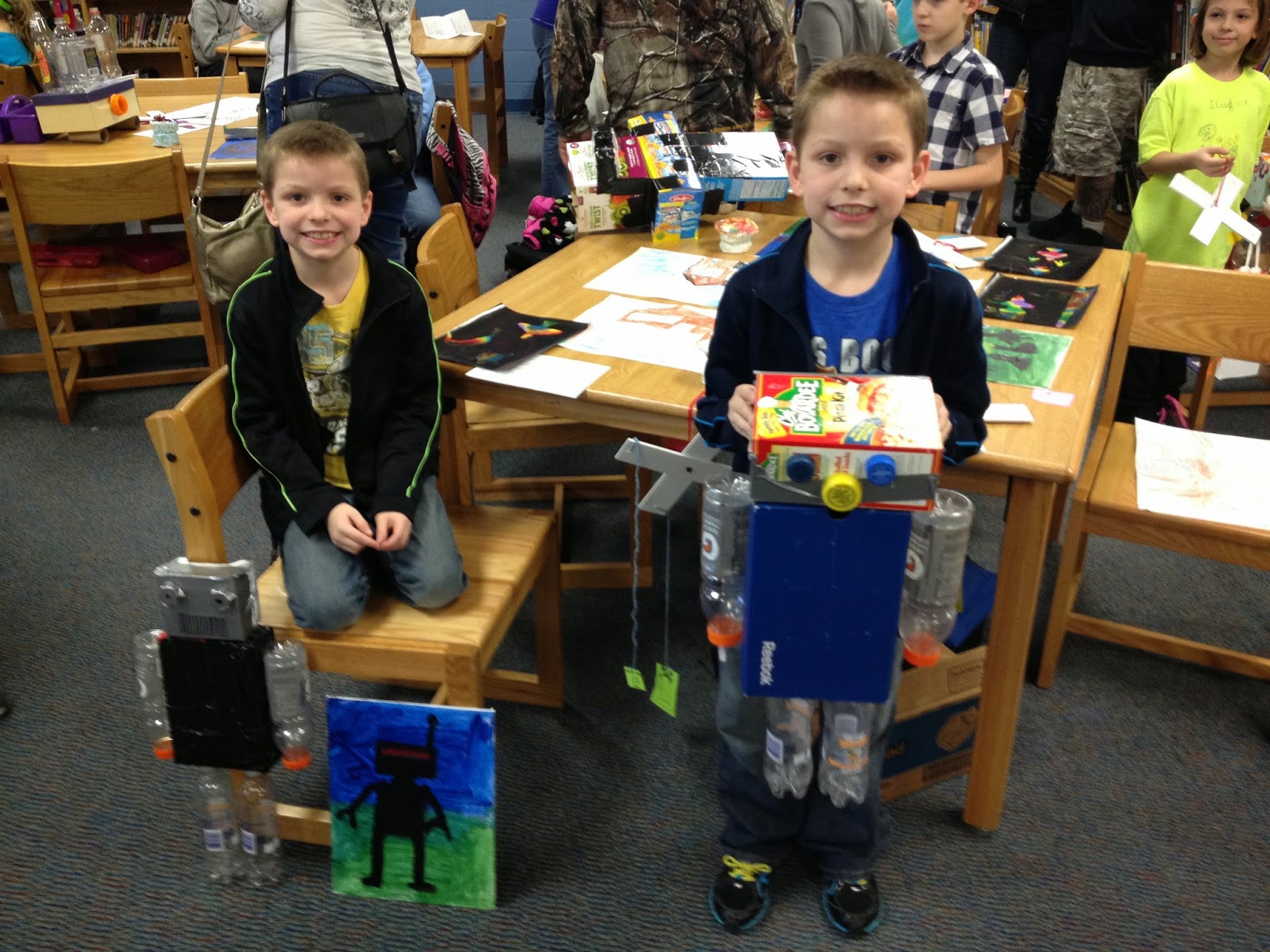We have been busy bees this year at Prairie Branch Elementary! I realized since I love teaching about other cultures and art around the world I had not spent much time teaching about the "masters" from Western art. So once again I have been coming up with new lesson plans with the help of amazing art teacher's blogs and Pinterest posts! Here is a sample of what we have been up to.
Kindergarten: Cezanne Fruit Still Life
We read the book
How Are You Peeling? Foods With Moods by Freymann and Elffers. The photographs in this book are hilarious- the authors took real fruit and veggies and gave them facial expressions. This gives the students a good look at the colors and textures of fruits and veggies. We then looked at the artwork of Paul Cezanne focusing on his still life paintings. I had a bowl with real looking plastic fruit set up in the middle of the room. With me guiding our drawing, we drew our bowl and fruit inside. I encourage the students to draw large- the apple has to be as big as your fist! We drew in pencil then traced with sharpie. The next class, we painted with tempera cakes.
First Grade: Dali's Elephant
Students looked at the artwork of Surrealist artists including Salvador Dali. We talked about how Surrealist art is realistically painted, but it has something unrealistic about it. In
The Elephants painting, we see two elephants with abnormally long skinny legs. We imitated this painting for our project using marker and chalk pastel. For complete directions check out this great blog! http://elementaryartfun.blogspot.com/2011/03/salvador-dali-elephants-and.html
Second Grade: Impression Sunshine
Students learned about the Impressionist art movement. We looked at a variety of Impressionist artist's work and noticed that they used short brushstrokes to create their paintings and focused on the way light hit things in nature. Since light was so important to the Impressionist I thought it was only appropriate to create a sun! We used the impressionist "dabbing" technique to create a cool color sky. We used a printmaking (stamping) technique using warm colors and marker or glue bottle lids for the sun. Next class we ripped the yellow paper up and collaged it on the blue paper to create a sun. Last we used gold metallic paint for the rays.
Third Grade: Van Gogh Flowers
For this project we looked at the many sunflower paintings of Vincent Van Gogh, and did a compare and contrast with them. First we did a draw a long with pencil on black paper to create the vase, table line, and flowers. Students chose whether they wanted to draw sunflowers or a different type of flower. Then I demonstrated how to trace a glue line with Elmer's school glue over their pencil lines. Students placed these on the floor by the wall to dry as putting them in a slanted drying rack causes the glue to run. Next class, we used chalk pastel to color between the glue lines. Sometimes I take the whole class outside and spray each of their artworks with clear spray paint, but it depends on the weather, wind, and if it is a class that can handle being outside without running around like crazy! ;-)
Fourth Grade: Japanese Bridge
Students looked at Impressionist artists such as Claude Monet. We saw how he would paint the same outdoor scene over and over again in different seasons and times of day. He liked to watch how light would change the scene over time. The artists also used small brush strokes instead of long smooth ones. Monet painted the Japanese Bridge on his property many times. We used this as the inspiration for our painting. We used liquid masque to create a bridge across our page the first day, then practiced small brushstrokes on scrap paper. The next class we painted dabs of paint all over our bridge paper to look like trees above the bridge and reflections of trees below. The third class we took off the masque, added highlights and/or shadows to the bridge and painted horizontal streaks of blue as well as waterlilies under the bridge to make it look like a pond.
Fifth Grade: Value Self Portrait
This was the 5th graders first project this year. We looked at Albrecht Durer's self portrait from 1484 that he drew when he was only 13 years old. It is done in black and white and has shading to make it look realistic. We learned about basic facial proportions and practiced drawing a face together. I took pictures of each student by my lamp to create a highlight and shadow on their face, then printed them in black and white. Each students drew their self portrait on white 12x15 paper. We learned VALUE refers to dark and light. We used dark, light, and medium values to make our portraits look 3D. We also learned if you VALUE something it means you care about it. We wrote things we valued around the edge of our portrait.
Thank you for stopping by... hope to post more soon! :-)



















